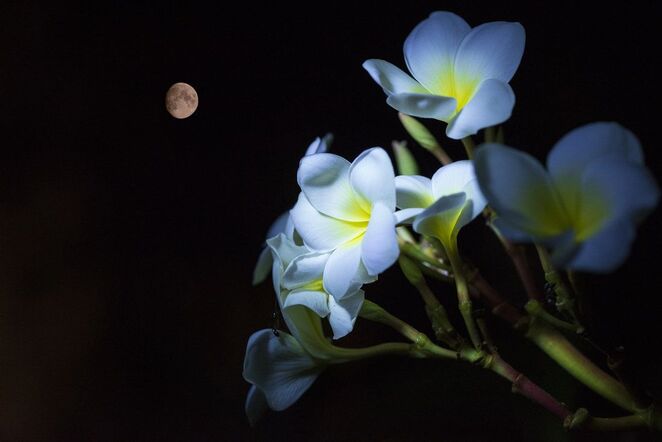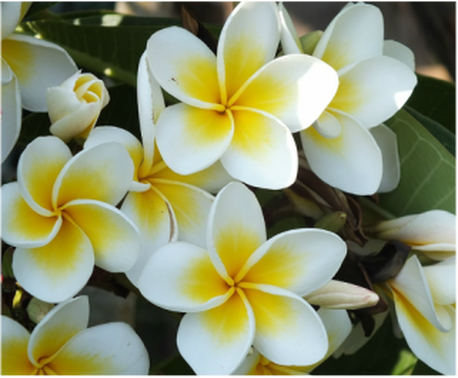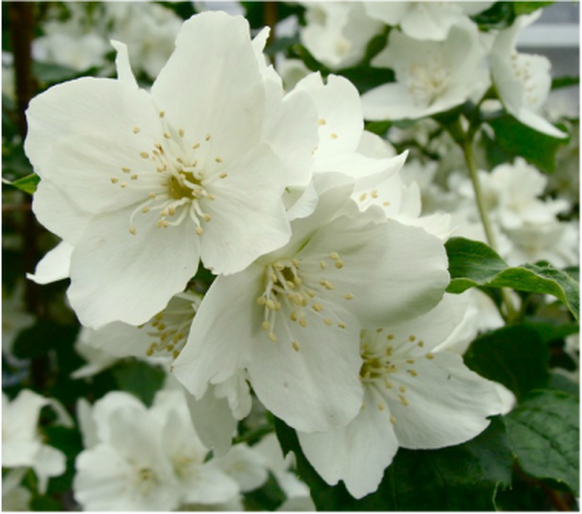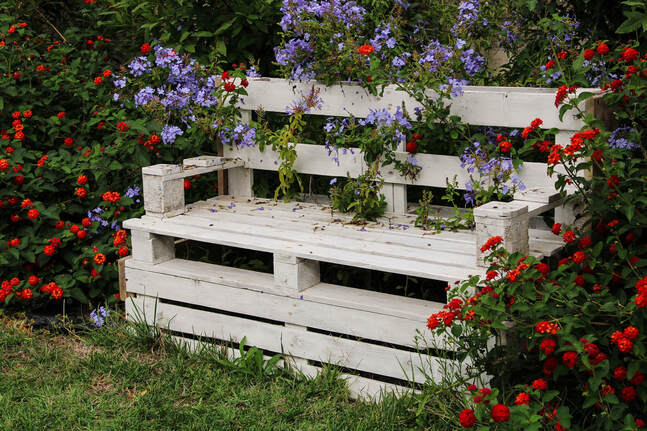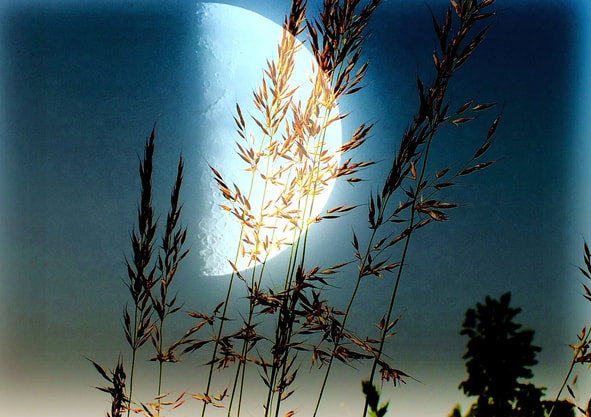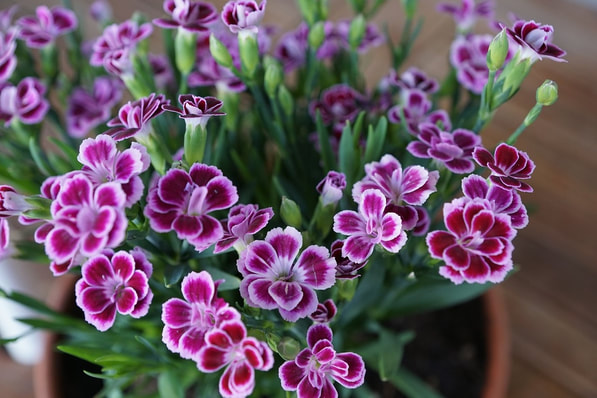How to Plant a Moon Garden
What is a Moon Garden?
Moon gardens are designed to be enjoyed by the light of the moon. They typically contain white and silvery hued flowers and plants that shimmer in the light of the moon.
These magical gardens also contain night blooming flowers that fill the air with fragrance on hot summer nights.
These magical gardens also contain night blooming flowers that fill the air with fragrance on hot summer nights.
What is Moonlight Gardening?
Designing and growing a moon garden filled with a host of white, silver and pastel flowers that glimmer in the moonlight creates an oasis of color and fragrance enjoyed best at night.
While you won't likely be gardening by moonlight, you will spend time there to soak in its magic.
While you won't likely be gardening by moonlight, you will spend time there to soak in its magic.
Why is it called a moon garden?
A moon garden is called a moon garden because it is designed to be enjoyed in the light of the moon. Moon gardens are filled with night blooming flowers; plants with white, pastel or silvery foliage and blooms; and decorative features that dazzle the eye in the light of the moon.
These enchanting gardens are meant to enhance the beauty of your landscape by night, but are also attractive during the day.
These enchanting gardens are meant to enhance the beauty of your landscape by night, but are also attractive during the day.
What plants are good for a Moon Garden?
Moon gardens are best planted with white, silver or pastel flowers that reflect moonlight and fragrant flowers that bloom at night. This can include perennials, annuals and even flowering shrubs.
Ideally, your moon garden is filled with flowers that bloom at different times so that the bed has ample blooms all summer long.
Ideally, your moon garden is filled with flowers that bloom at different times so that the bed has ample blooms all summer long.
Spring blooming white flowers for moon gardens include delicate Lily of the Valley, Snow Drops, White Tulips, Azaleas, White Lilacs, Lily of the Valley Shrubs(Mountain Snow Pieris), Snowbells, White Peonies and White Creeping Phlox.
Summer blooming white flowers for moon gardens include White Yarrow, Shasta Daisies. White Daylilies, Sweet Alyssum, Moon Flowers, White Roses, White False Indigo, White Phlox, White Petunias, White Begonias, White Impatiens, Night Blooming Jasmine and White Roses.
Fall blooming white flowers for moon gardens include White Sunflowers, White Hollyhocks, White Oriental Lilies, Japanese Anemone, New York Asters, and White Coreopsis (Tickseed),.
How do you plant a Moon Garden?
Planting a moon garden doesn't require a lot of room. You can easily devote a small section of an existing flowerbed to a moon garden or even use containers for a moon garden.
Choose white, silver or variegated flowers and plants that will glitter in the light of the moon. Night blooming flowers can be added for intense fragrance.
Plant the flowers where they will be under the path of the moon. Check that buildings or other garden structures will not cast a shadow over your moon garden at night.
Cluster flowers and plants in the same hue together for the best display. Silver or pastel flowers and foliage will look dusky in the moon garden if they are planted beside pure white varieties, but will shimmer in the moonlight if they are planted separately.
Include flowers that bloom at different times of the year so that you will always have something in bloom.
Add annuals to keep the moon garden alive with shimmering flowers all summer. Annuals like impatiens, begonias and petunias bloom from spring until fall.
How do you decorate a Moon Garden?
Decorate your moon garden with trellises, painted pots, benches, water features, windchimes and solar lights.
- A dark trellis or pot will recede into the background at night giving the illusion your flowers are floating in the air.
- White trellises and pots become part of the decor as they reflect the silver rays of the moon at night.
- Add lanterns or glowing lights to the garden to enhance its beauty when the moon is not visible. To create the illusion of moonlight, hang lanterns from trees or on shepherds hooks to illuminate the garden from above.
- Or try adding potted flowers in a solar plant pot that gives off a gentle glow at night. The soft glow from solar lights helps keep your moon garden alive during the new moon and crescent moon phases.
- Water features and windchimes add charm to the moon garden as they tickle the senses both day and night.
What plants grow in a Moon Garden?
Plants in a moon garden don't really grow by the light of the moon, so you will need to provide them with everything they need to thrive in the daytime, too.
To determine what flowers grow in a moon garden you need to consider the amount of light the area receives during the day and choose flowers and plants for that location.
To determine what flowers grow in a moon garden you need to consider the amount of light the area receives during the day and choose flowers and plants for that location.
What flowers are associated with the moon?
Most people associate Night Blooming Jasmine and Moon Flowers with the moon, but you may be surprised to learn that Native American's refer to the first Full Moon in May as the Full Flower Moon. This is the time of year that spring flowers are typically in bloom.
April's full moon is also connected to flowers as one of its names is the Pink Full Moon. According to Flower Moon and Lunar Folklore this is the time of year when pink flowers, like pink Phlox are in bloom.
April's full moon is also connected to flowers as one of its names is the Pink Full Moon. According to Flower Moon and Lunar Folklore this is the time of year when pink flowers, like pink Phlox are in bloom.
What plants grow in moonlight?
Plants don't really grow in moonlight as they need light from the sun to perform photosynthesis and grow. But flowers that receive sunshine, water and the nutrients they need to grow during the day can dazzle the eye at night.
Some flowers even bloom at night instead of during the day. Night blooming flowers include Moonflowers, Devil's Trumpets, Angel's Trumpet, Night Phlox, Night Blooming Jasmine, Casa Blanca Lily and Tuberose.
Some flowers even bloom at night instead of during the day. Night blooming flowers include Moonflowers, Devil's Trumpets, Angel's Trumpet, Night Phlox, Night Blooming Jasmine, Casa Blanca Lily and Tuberose.
What are some good moonlight plants?
Good moonlight plants for your moon garden include a wide range of plants with white, silver or variegated foliage; plants that produce white, silvery or pastel flowers, and plants that bloom or release their fragrance at night.
Variegated flowers, such as Sweet William, can create a dazzling show in the moonlight.
Variegated flowers, such as Sweet William, can create a dazzling show in the moonlight.
What time of night do moonflowers bloom?
Moonflowers bloom all night long. Moonflower blooms open at dusk and close or shrivel when they are touched by the morning sun.
Each moonflower bloom lives for one night. New blooms open on the moonflower vines each night.
Each moonflower bloom lives for one night. New blooms open on the moonflower vines each night.
